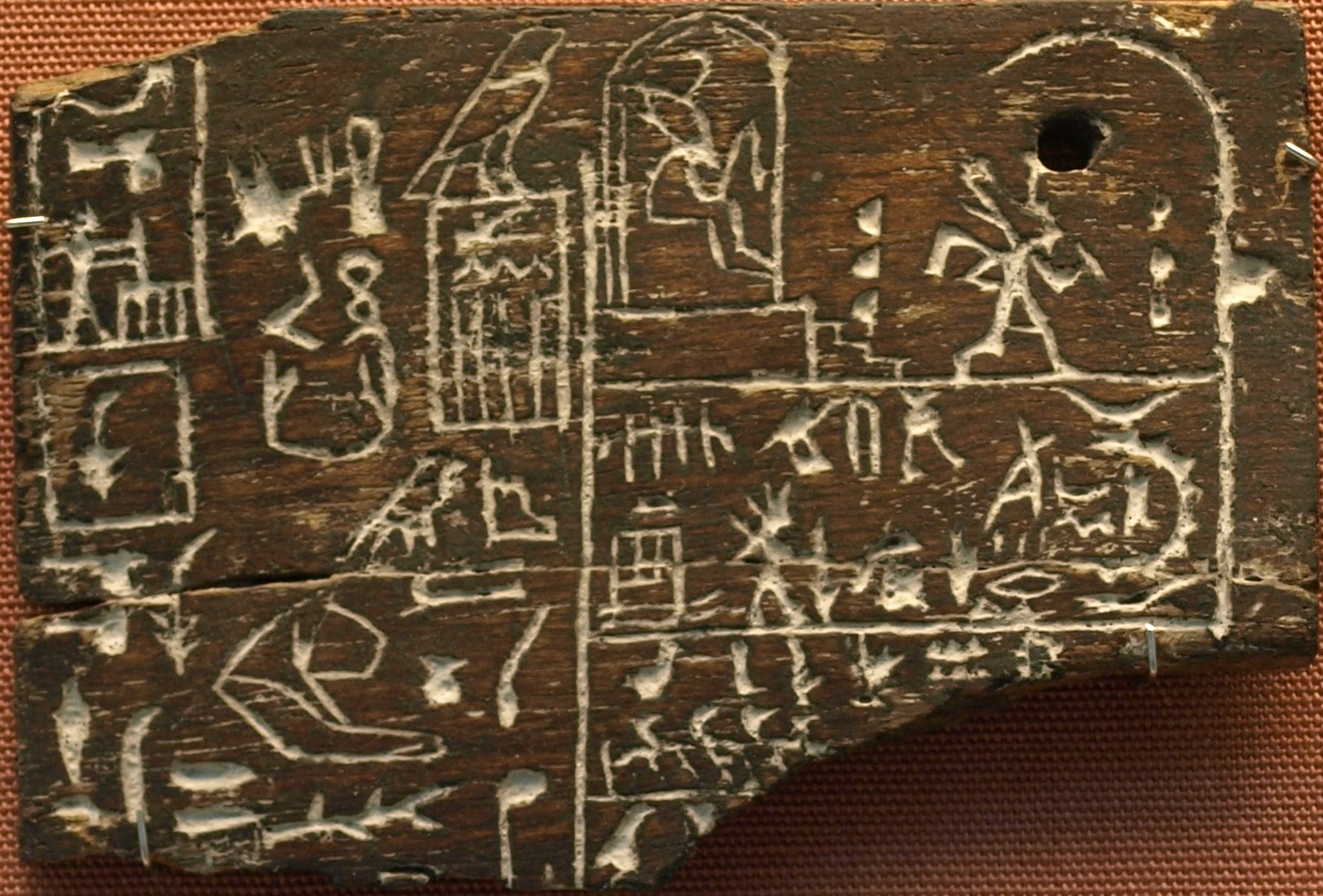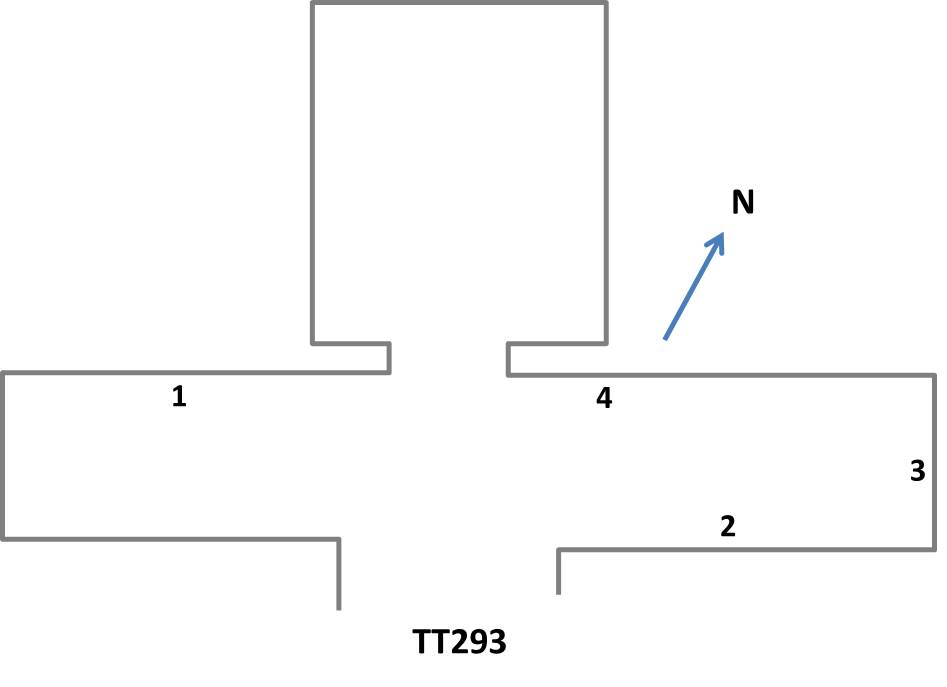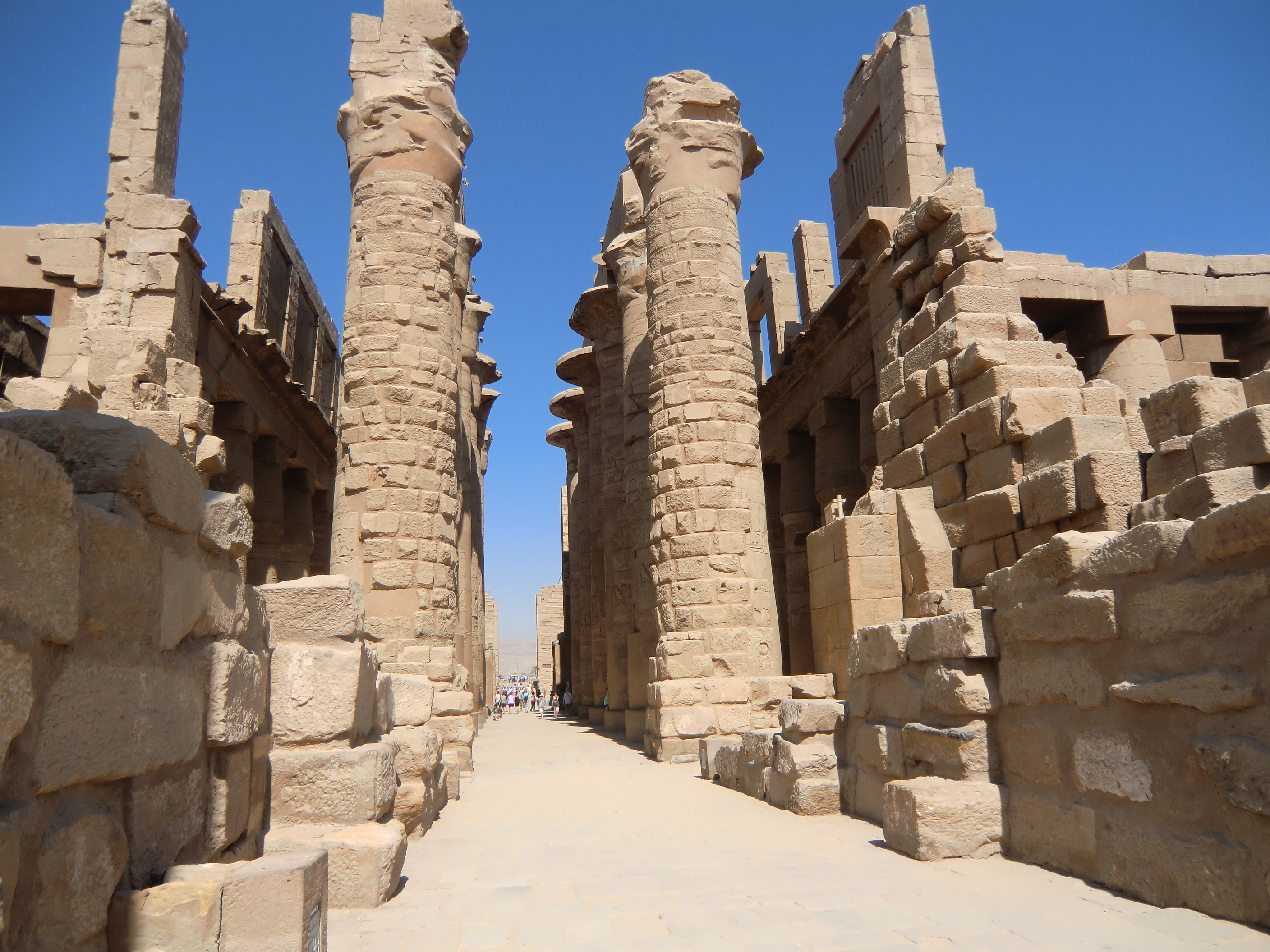|
Bakenkhonsu
Bakenkhonsu ("Servant of Khonsu") was a High Priest of Amun in ancient Egypt during the reign of Pharaoh Ramesses II.Dodson, Aidan (2001). ''The Hieroglyphs of Ancient Egypt''. New York: Barnes & Noble. Hardcover: , p. 30. Information about his life was found on the back of his block statue (which is now located in Munich). The information on the statue provides details about the education of young Egyptian noblemen at that time and the career of priests. Bakenkhonsu is named for the god Khon su, ''traveller,'' a Moon God of ancient Egypt and son of Amun. Life According to the information inscribed on his statue, Bakenkhonsu was the son of Ipui, a priest of Amun (other sources suggest that he was the son of Roma, whose wife was also called Roma). His two younger brothers were Roma-Roi and Ipui. He spent four years at school, starting at the age of four, as was customary at that time. He then worked at the stables of Pharaoh Seti I for eleven years. There he learned to ... [...More Info...] [...Related Items...] OR: [Wikipedia] [Google] [Baidu] |
Block Statue
The block statue is a type of memorial statue that first emerged in the Middle Kingdom of Egypt. The block statue grew in popularity in the New Kingdom and the Third Intermediate Period, and by the Late Period, this type of statue was the most common. These statues were used in temples typically as funerary monuments of non-royal yet important individuals. According to primary sources from the New Kingdom, the posture of the statue was possibly intended to resemble a guardian seated in the gateway of a temple. In addition, their simple shape provided ample flat surfaces for inscriptions of offerings and invocations. Block statues consist of a man squatting with his knees drawn up to his chest and his arms folded on top his knees. Often, these men are wearing a "wide cloak" that reduces the body of the figure to a simple block-like shape. Most of the detail is reserved for the head of the individual being depicted. In some instances the modeling of the limbs has been retained by ... [...More Info...] [...Related Items...] OR: [Wikipedia] [Google] [Baidu] |
Branch (hieroglyph)
The ancient Egyptian Branch hieroglyph, also called a Stick, is a member of the trees and plants hieroglyphs. The branch is an Egyptian language biliteral with the value ''(kh)t'', (khet)-(ḫt); it is an ideogram-(determinative), for wood, tree, and the linear measure (=100 cubits). The hieroglyph is described as a branch without leaves. As the value (kh)t, it is often complemented in a hieroglyphic block with ''kh''–("sieve"), Aa1 and ''"t"''–( bread bun). X1 Iconographic usage Pharaonic usage Pharaoh Nectanebo II used the branch hieroglyph for his Nomen name of ''Nakhthoreb'', "Strong is His Lord, Beloved of Hathor". Pharaoh Nectanebo I's nomen was ''Nekhtnebef'', "Strong is His Lord." Old Kingdom usage Two labels are known from the Old Kingdom showing usage of the ''branch hieroglyph'', one by Pharaoh Den, one by Semerkhet. The usage on the labels shows the branch hieroglyph in a more archaic form. Rosetta Stone usage of branch--"khet" In the 198 BC, ... [...More Info...] [...Related Items...] OR: [Wikipedia] [Google] [Baidu] |
Block Statue (Egyptian)
The block statue is a type of memorial statue that first emerged in the Middle Kingdom of Egypt. The block statue grew in popularity in the New Kingdom and the Third Intermediate Period, and by the Late Period, this type of statue was the most common. These statues were used in temples typically as funerary monuments of non-royal yet important individuals. According to primary sources from the New Kingdom, the posture of the statue was possibly intended to resemble a guardian seated in the gateway of a temple. In addition, their simple shape provided ample flat surfaces for inscriptions of offerings and invocations. Block statues consist of a man squatting with his knees drawn up to his chest and his arms folded on top his knees. Often, these men are wearing a "wide cloak" that reduces the body of the figure to a simple block-like shape. Most of the detail is reserved for the head of the individual being depicted. In some instances the modeling of the limbs has been retained by t ... [...More Info...] [...Related Items...] OR: [Wikipedia] [Google] [Baidu] |
High Priest Of Amun
The High Priest of Amun or First Prophet of Amun ('' ḥm nṯr tpj n jmn'') was the highest-ranking priest in the priesthood of the ancient Egyptian god Amun. The first high priests of Amun appear in the New Kingdom of Egypt, at the beginning of the Eighteenth Dynasty. History The priesthood of Amun rose in power during the early Eighteenth dynasty through significant tributes to the god Amun by ruler such as Hatshepsut and more importantly Thutmose III. The Amun priesthood in Thebes had four high-ranking priests: * The Chief Prophet of Amun at Karnak (''ḥm nṯr tpj n jmn''), also referred to as the Chief Priest of Amun. * The Second Prophet of Amun at Karnak (''ḥm nṯr snnw n jmn''), also referred to as the Second Priest of Amun. * The Third Prophet of Amun at Karnak (''ḥm nṯr ḫmtnw n jmn khemet-nu''), also referred to as the Third Priest of Amun. * The Fourth Prophet of Amun at Karnak (''ḥm nṯr jfdw n jmn''), also referred to as the Fourth Priest of Amun. T ... [...More Info...] [...Related Items...] OR: [Wikipedia] [Google] [Baidu] |
Ramessesnakht
Ramessesnakht was High Priest of Amun during many years in the 20th Dynasty. He was appointed as the High Priest at Thebes under Ramesses IV. He served in office until the reign of Ramesses IX. It was during Ramessesnakht's tenure that the power and importance of the Amun priesthood grew over Egypt while the Pharaoh's power began to noticeably decline. Biography He was the son of Meribastet, steward to the pharaoh. Ramessesnakht was married to Adjedet-Aat, the daughter of Setau, High Priest of Nekhbet, and had at least two sons: Amenhotep and Nesamun and a daughter Tamerit. His son Amenhotep would succeed him in office and there is evidence that, at least for a while, his son, the Second Prophet of Amun Nesamun also acted as High Priest of Amun. His daughter Tamerit married Amenemopet, Third Prophet of Amun, making the family related through marriage to another important priestly family, that of Bakenkhonsu who served as High Priest of Amun under Ramesses II. (Amenemopet w ... [...More Info...] [...Related Items...] OR: [Wikipedia] [Google] [Baidu] |
TT35
The Theban Tomb TT35 is located in Dra Abu el-Naga, part of the Theban Necropolis, on the west bank of the Nile, opposite to Luxor. It is the burial place of the ancient Egyptian noble named Bakenkhons I, who lived during the 19th Dynasty, during the reign of Ramesses II. Bakenkhons was a High Priest of Amun. Bakenkhonsu was the son of Roma, the High Priest of Amun and his wife who was also called Roma. Bakenkhons' wife was named Meretseger. She held the titles of Chief of the Harem of Amun Amun (; also ''Amon'', ''Ammon'', ''Amen''; egy, jmn, reconstructed as (Old Egyptian and early Middle Egyptian) → (later Middle Egyptian) → (Late Egyptian), cop, Ⲁⲙⲟⲩⲛ, Amoun) romanized: ʾmn) was a major ancient Egyptian .... See also * List of Theban tombs References Buildings and structures completed in the 13th century BC Theban tombs {{AncientEgypt-stub ... [...More Info...] [...Related Items...] OR: [Wikipedia] [Google] [Baidu] |
Twentieth Dynasty Of Egypt
The Twentieth Dynasty of Egypt (notated Dynasty XX, alternatively 20th Dynasty or Dynasty 20) is the third and last dynasty of the Ancient Egyptian New Kingdom period, lasting from 1189 BC to 1077 BC. The 19th and 20th Dynasties furthermore together constitute an era known as the ''Ramesside period''. This dynasty is generally considered to be the start of the decline of Ancient Egypt. History Background Upon the death of the last pharaoh of the 19th Dynasty, Queen Twosret, Egypt descended into a period of civil war, as attested by the Elephantine stela built by Setnakhte. The circumstances of Twosret's demise are uncertain, as she may have died peacefully during her reign or been overthrown by Setnakhte, who was likely already middle aged at the time. 20th Dynasty A consistent theme of this dynasty was the loss of pharaonic power to the High Priests of Amun. Horemheb, a pharaoh of the 18th Dynasty, had restored the traditional Ancient Egyptian religion and the priesthood ... [...More Info...] [...Related Items...] OR: [Wikipedia] [Google] [Baidu] |
Karnak
The Karnak Temple Complex, commonly known as Karnak (, which was originally derived from ar, خورنق ''Khurnaq'' "fortified village"), comprises a vast mix of decayed temples, pylons, chapels, and other buildings near Luxor, Egypt. Construction at the complex began during the reign of Senusret I (reigned 1971–1926 BCE) in the Middle Kingdom (around 2000–1700 BCE) and continued into the Ptolemaic Kingdom (305–30 BCE), although most of the extant buildings date from the New Kingdom. The area around Karnak was the ancient Egyptian ''Ipet-isut'' ("The Most Selected of Places") and the main place of worship of the 18th Dynastic Theban Triad, with the god Amun as its head. It is part of the monumental city of Thebes, and in 1979 it was inscribed on the UNESCO World Heritage List along with the rest of the city. The Karnak complex gives its name to the nearby, and partly surrounded, modern village of El-Karnak, north of Luxor. Overview The complex is a vast open site an ... [...More Info...] [...Related Items...] OR: [Wikipedia] [Google] [Baidu] |
Thebes (Egypt)
, image = Decorated pillars of the temple at Karnac, Thebes, Egypt. Co Wellcome V0049316.jpg , alt = , caption = Pillars of the Great Hypostyle Hall, in ''The Holy Land, Syria, Idumea, Arabia, Egypt, and Nubia'' , map_type = Egypt , map_alt = , map_size = , relief = yes , coordinates = , location = Luxor, Luxor Governorate, Egypt , region = Upper Egypt , type = Settlement , part_of = , length = , width = , area = , height = , builder = , material = , built = , abandoned = , epochs = , cultures = , dependency_of = , occupants = , event = , excavations = , archaeologists = , condition = , ownership = , management = , public_access = , website = , notes = , designation1 = WHS , designation1_offname = Ancient The ... [...More Info...] [...Related Items...] OR: [Wikipedia] [Google] [Baidu] |
Roma Called Roy
Roma called Roy was High Priest of Amun during the Nineteenth Dynasty of Egypt, at the end of the reign of Ramesses II and continued into the reigns of Merenptah and likely Seti II. Roma served as third and second priest of Amun and finally as first prophet (high priest) of Amun. He was also a count (h3ty-a), a prince (iry-pat) and a divine father pure of hands. Roma's wife Tamut is mentioned in his tomb,Porter and Moss, The Topographical Bibliography, Volume I Part 1. The Theban Necropolis. Private Tombs. (2nd ed.) 2004 while a wife named Tabest is named on a stele in Leiden.H.D. Schneider and M.J. Raven, Life and Death Under the Pharaohs, Australia, 1999, pg 40-41 Stele Also known is the stele from Leiden (Netherlands), which bears an inscription from Roma called Roy, and was once located on the east side of the eighth pylon of the Karnak temple. It is an important source of the history of the 19th dynasty. Contains information about the rise of the Theban priesthood, the i ... [...More Info...] [...Related Items...] OR: [Wikipedia] [Google] [Baidu] |
World Museum Liverpool
World Museum is a large museum in Liverpool, England which has extensive collections covering archaeology, ethnology and the natural and physical sciences. Special attractions include the Natural History Centre and a planetarium. Entry to the museum is free. The museum is part of National Museums Liverpool. History The museum was originally started as the Derby Museum as it comprised the 13th Earl of Derby's natural history collection. It opened in 1851, sharing two rooms on Duke Street with a library. However, the museum proved extremely popular and a new, purpose-built building was required. Land for the new building, on a street then known as Shaw's Brow (now William Brown Street), opposite St George's Hall, was donated by local MP and Merchant William Brown, as was much of the funding for the building which would be known as the William Brown Library and Museum. Around 400,000 people attended the opening of the new building in 1860. Reports detailing the museum's a ... [...More Info...] [...Related Items...] OR: [Wikipedia] [Google] [Baidu] |
Amun
Amun (; also ''Amon'', ''Ammon'', ''Amen''; egy, jmn, reconstructed as (Old Egyptian and early Middle Egyptian) → (later Middle Egyptian) → (Late Egyptian), cop, Ⲁⲙⲟⲩⲛ, Amoun) romanized: ʾmn) was a major ancient Egyptian deity who appears as a member of the Hermopolitan Ogdoad. Amun was attested from the Old Kingdom together with his wife Amunet. With the 11th Dynasty ( 21st century BC), Amun rose to the position of patron deity of Thebes by replacing Montu. After the rebellion of Thebes against the Hyksos and with the rule of Ahmose I (16th century BC), Amun acquired national importance, expressed in his fusion with the Sun god, Ra, as Amun-Ra (alternatively spelled Amon-Ra or Amun-Re). Amun-Ra retained chief importance in the Egyptian pantheon throughout the New Kingdom (with the exception of the " Atenist heresy" under Akhenaten). Amun-Ra in this period (16th to 11th centuries BC) held the position of transcendental, self-created creator dei ... [...More Info...] [...Related Items...] OR: [Wikipedia] [Google] [Baidu] |







_(2865505031).jpg)